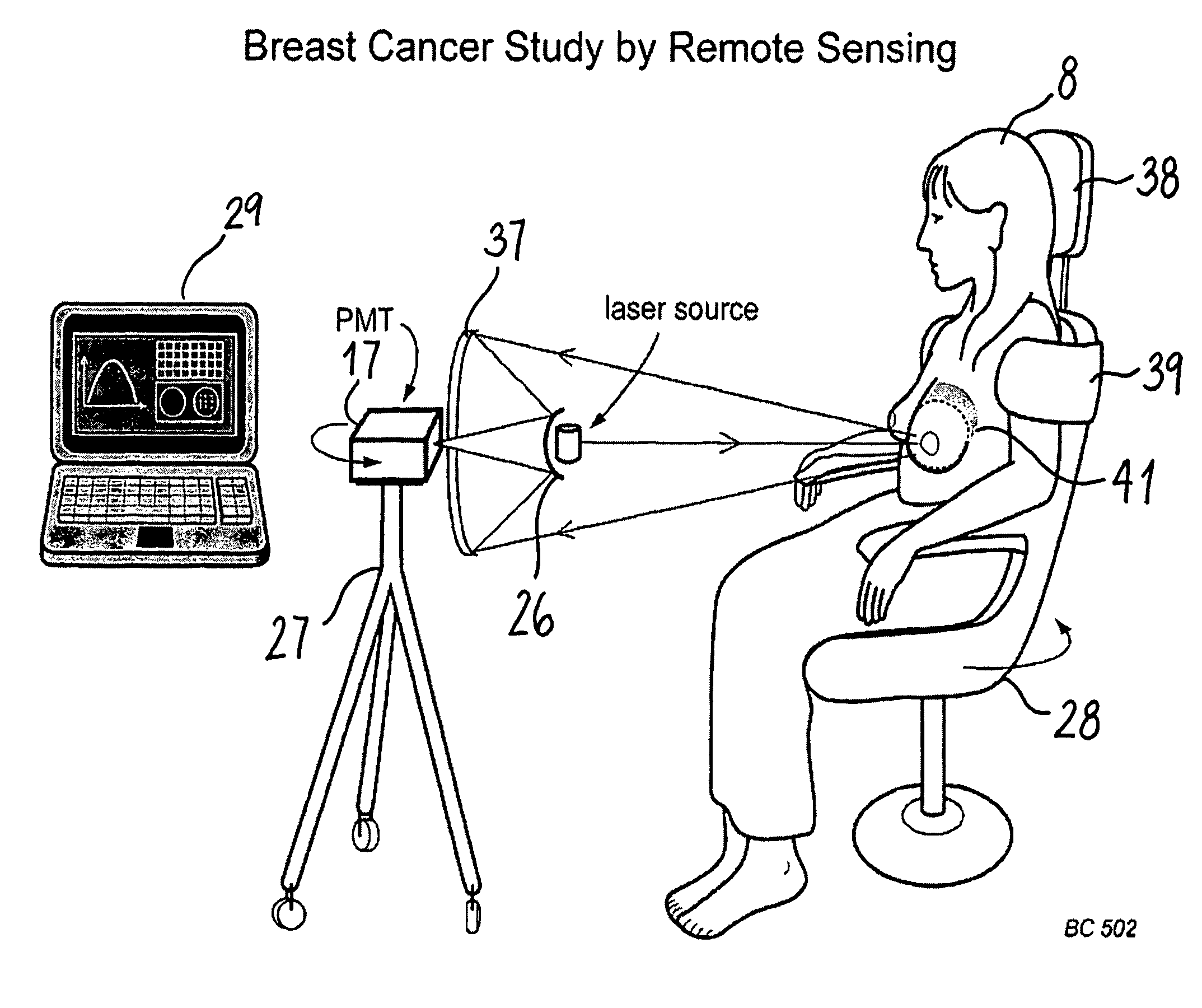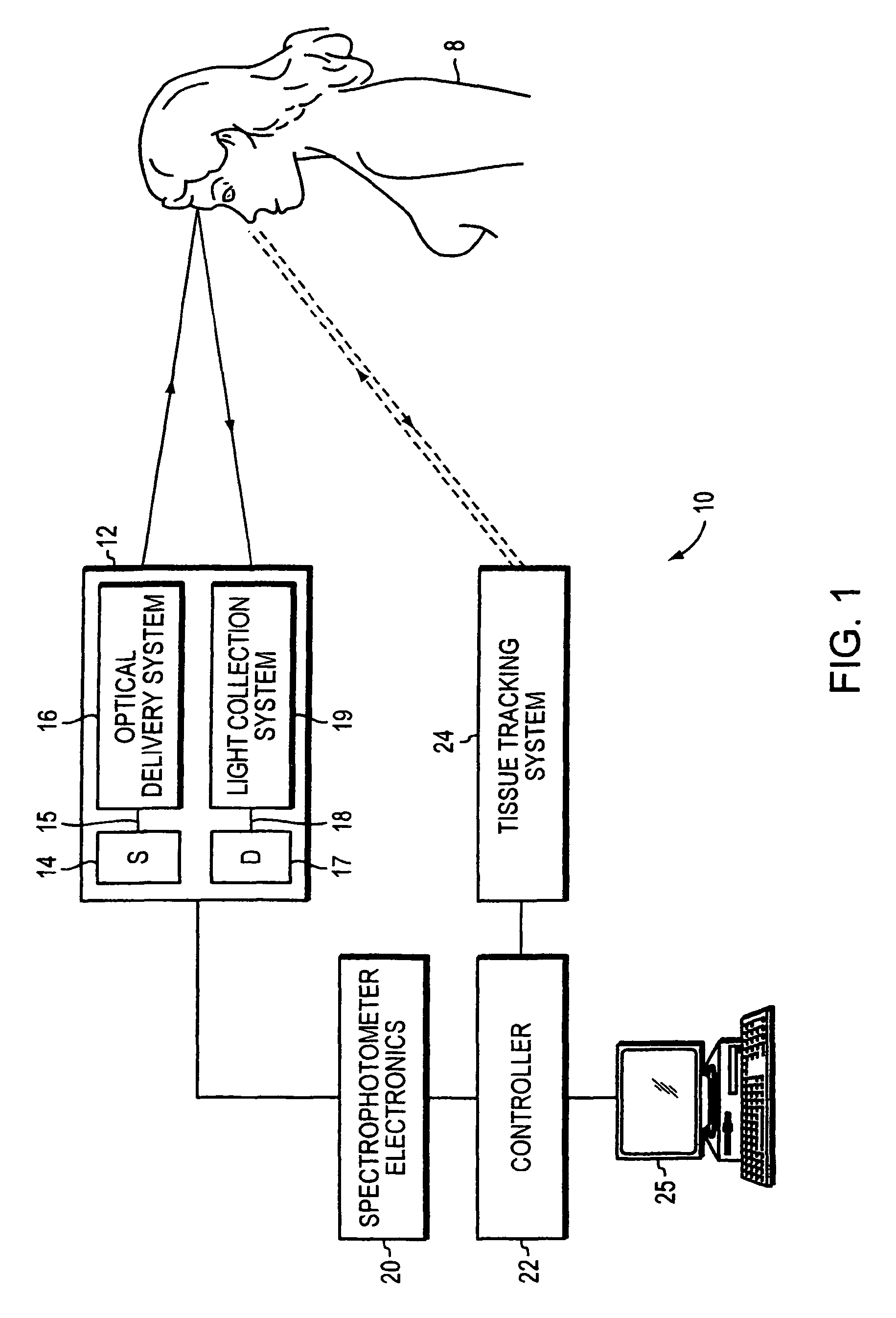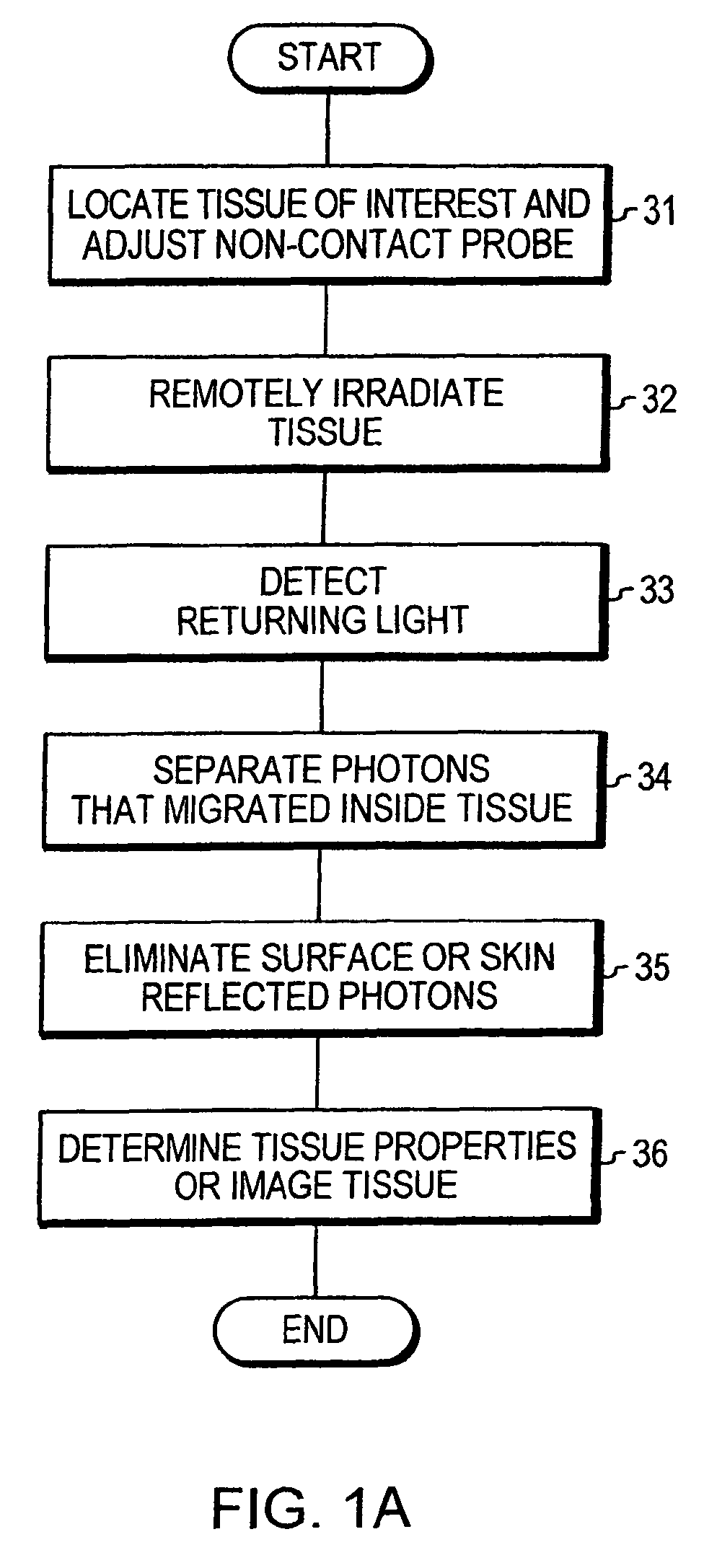Optical examination of biological tissue using non-contact irradiation and detection
a biological tissue and non-contact technology, applied in the field of optical examination of biological tissue using non-contact irradiation and detection, can solve the problems of subject's head, breast or limb, reaches the limit of convenience and accessibility, and the path cannot be approximated by a straight line, so as to reduce the effective numerical aperture and reduce the light collection efficiency
- Summary
- Abstract
- Description
- Claims
- Application Information
AI Technical Summary
Benefits of technology
Problems solved by technology
Method used
Image
Examples
Embodiment Construction
em using multiple boxcar integrators, FIG. 4B is a timing diagram for the TRS system of FIG. 4A, and FIG. 4C shows an example of a time resolved spectrum collected by the TRS system of FIG. 4A.
[0050]FIG. 5 is a schematic block diagram of another embodiment of a TRS system utilizing single photon counting electronics.
[0051]FIG. 5A is a time resolved spectrum measured by the TRS system of FIG. 5, which spectrum includes a modified pulse and a reference pulse.
[0052]FIG. 5B shows schematically another embodiment of a non-contact optical examination TRS system having multiple gates for data integration.
[0053]FIG. 6 shows schematically a homodyne phase-modulation system used for non-contact optical examination or imaging.
[0054]FIG. 6A shows schematically another homodyne phase-modulation system used for non-contact optical examination or imaging.
[0055]FIGS. 7 and 7A show example of optical images corresponding to blood volume changes and oxygenation changes, in the frontal lobe, when solv...
PUM
 Login to View More
Login to View More Abstract
Description
Claims
Application Information
 Login to View More
Login to View More - R&D
- Intellectual Property
- Life Sciences
- Materials
- Tech Scout
- Unparalleled Data Quality
- Higher Quality Content
- 60% Fewer Hallucinations
Browse by: Latest US Patents, China's latest patents, Technical Efficacy Thesaurus, Application Domain, Technology Topic, Popular Technical Reports.
© 2025 PatSnap. All rights reserved.Legal|Privacy policy|Modern Slavery Act Transparency Statement|Sitemap|About US| Contact US: help@patsnap.com



